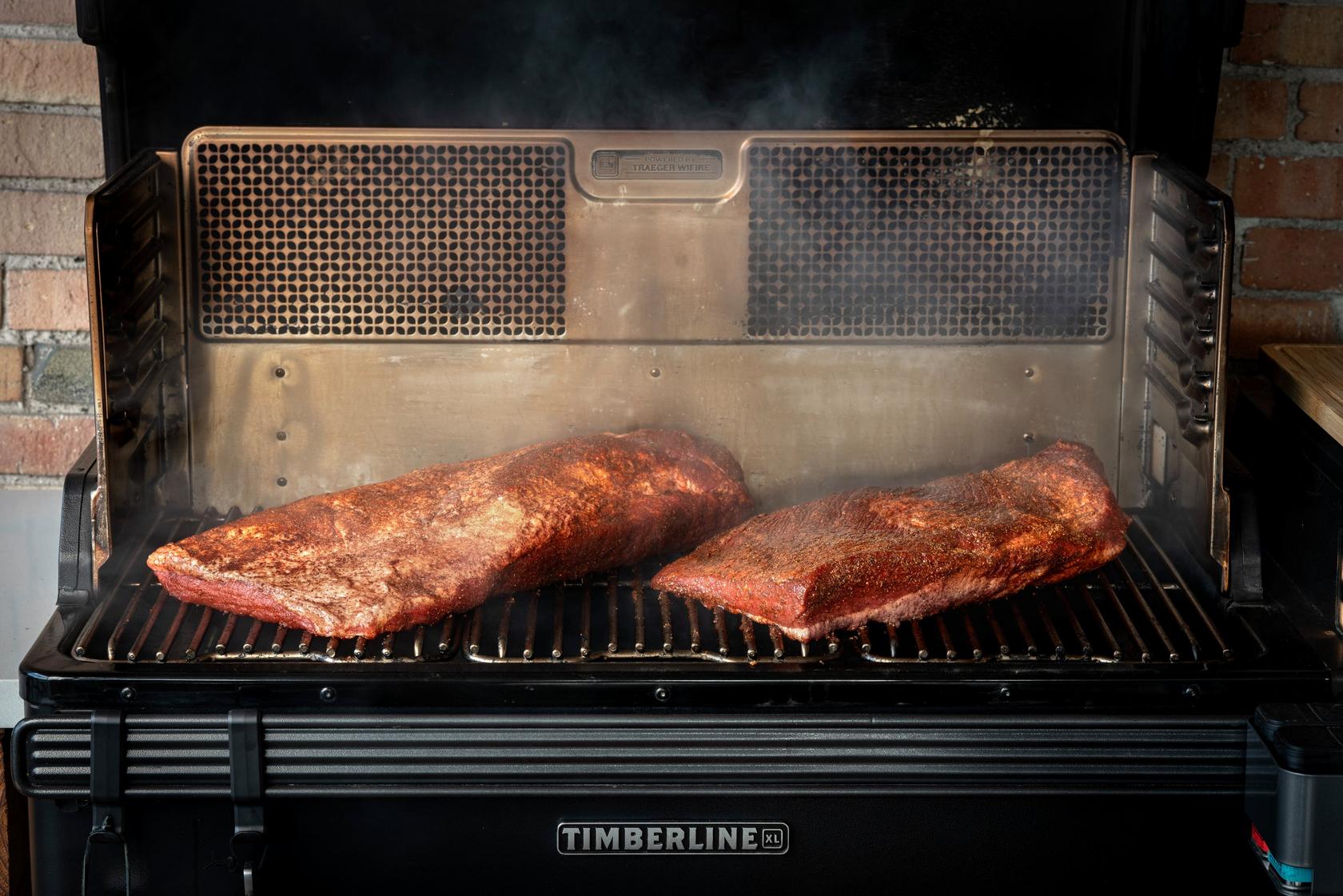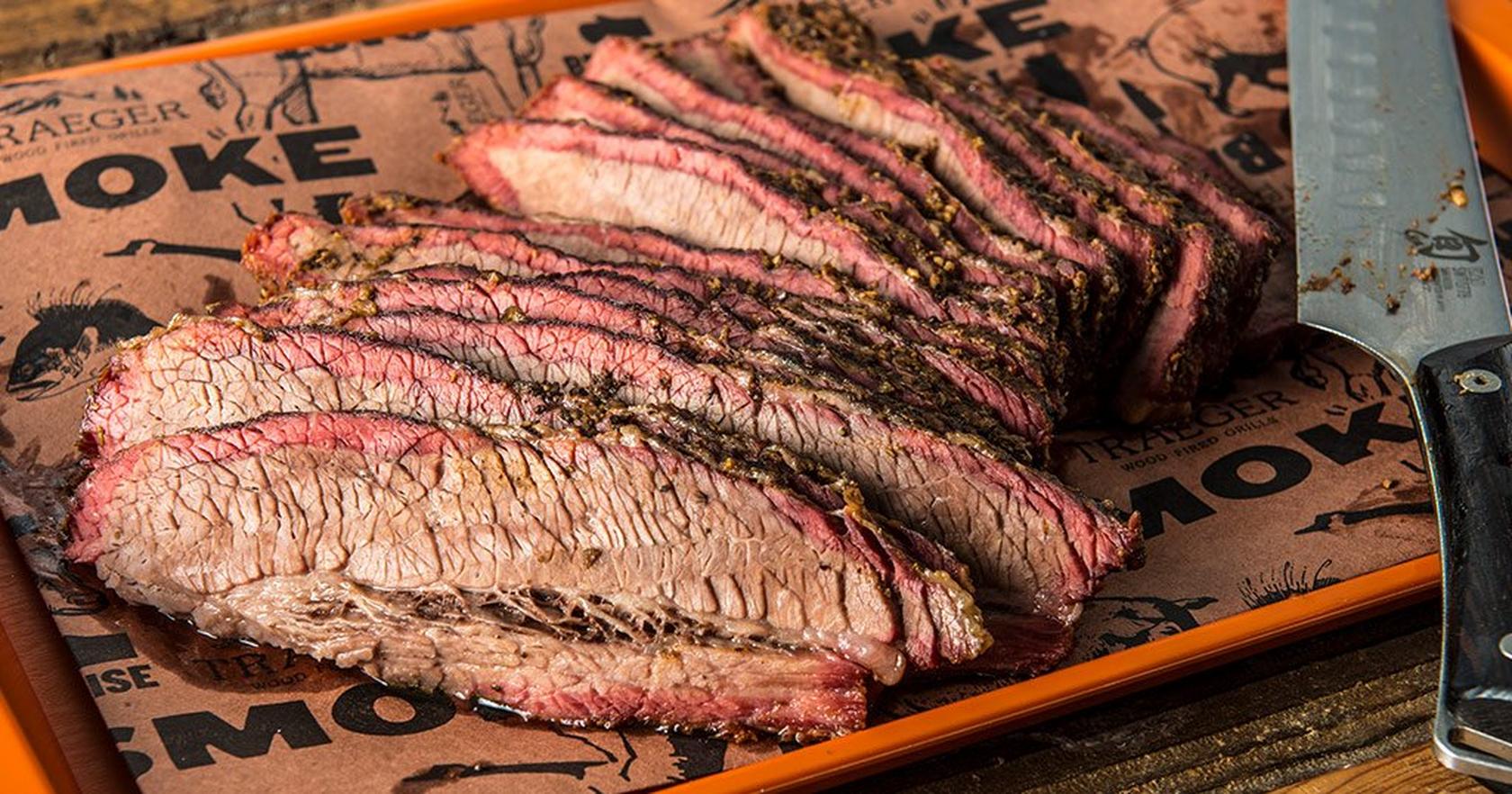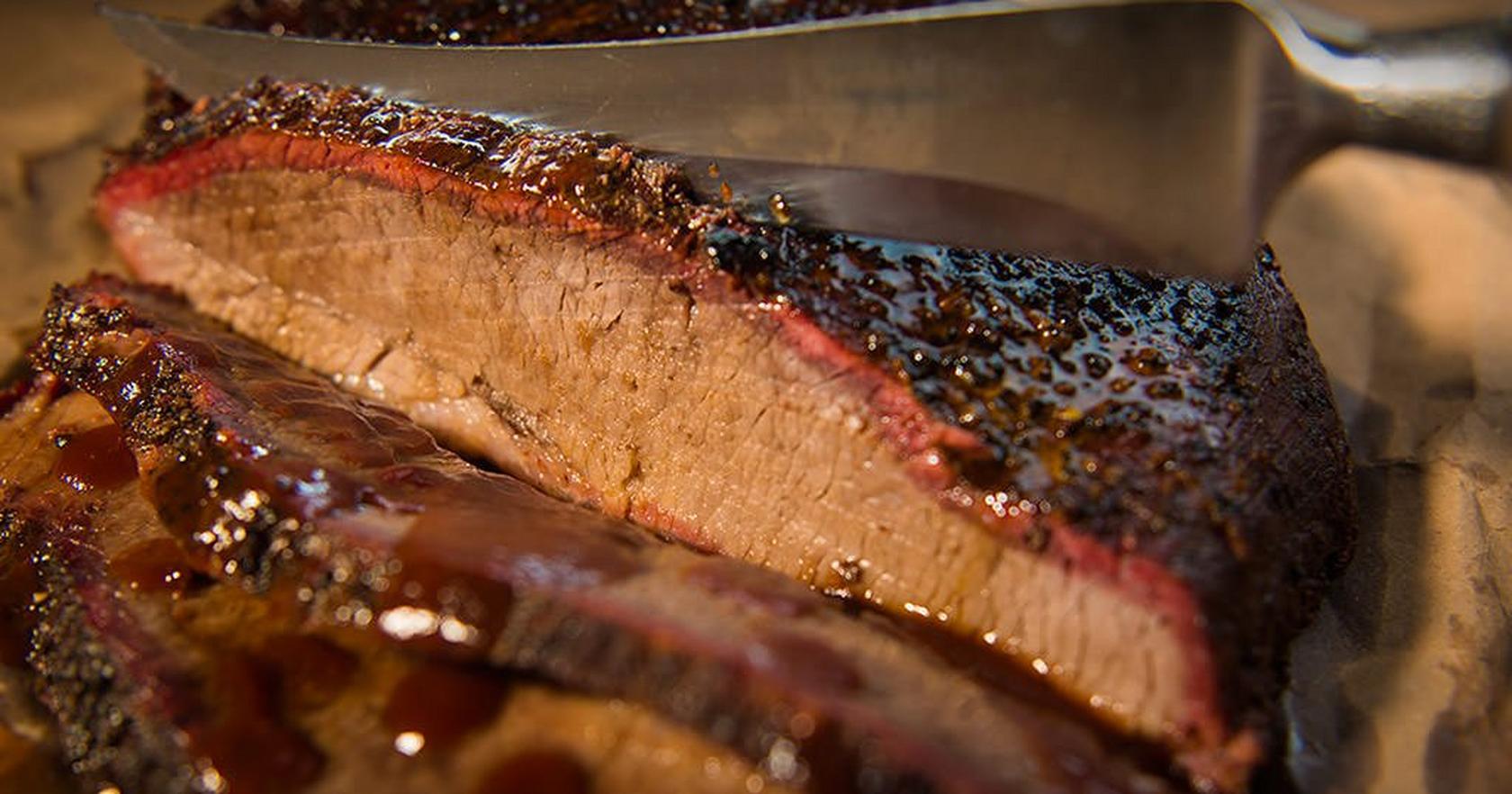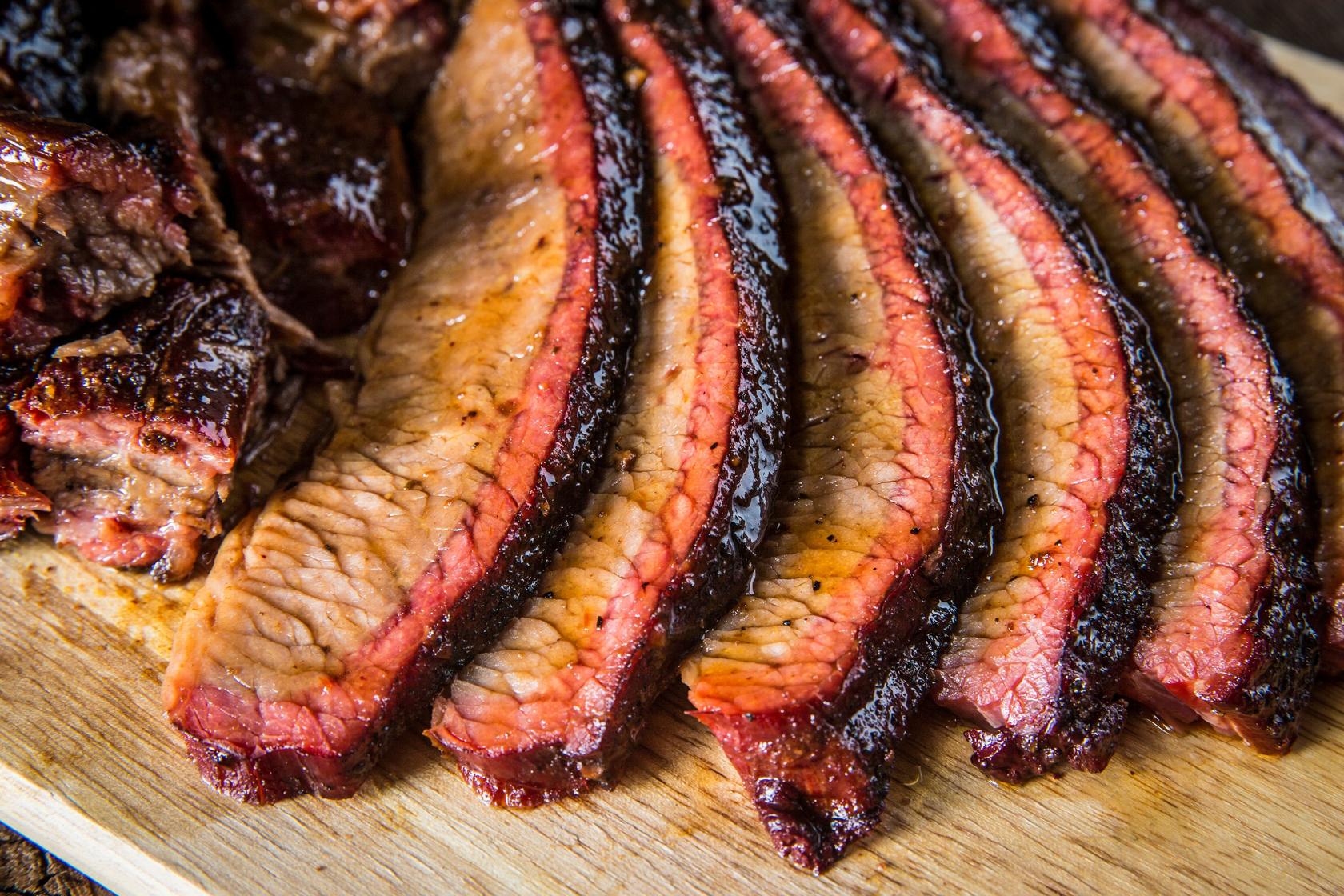
Should You Smoke Your Brisket Fat Side Up or Down?
Ask almost any contestant on the competition barbecue circuit, including Traeger’s own Chad Ward, whether to cook a brisket fat side up or down, and you will likely get the same unanimous answer: fat side down. But in Texas, they’d call that brisket upside down, and pitmasters like Meat Church’s Matt Pittman most definitely prefer fat side up. Read on to see which camp you’re in for smoking a brisket.
The debate over fat side up or fat side down has raged in the barbecue community for years. Like most good debates, the debate over brisket orientation leads us into the realms of both art and science. Chemistry is involved, but so is simple eye appeal. Let's dive in.
What Is the Brisket Fat Cap?
Brisket comes from the chest of the animal. The side facing out toward the skin is covered with a layer of fat. This layer of fat is called the fat cap. A fat cap is usually around 1-inch thick, but the exact thickness of the layer will depend on the individual animal and how it was butchered.
Note that other sections of the brisket also contain somewhat large sections of fat, but when you are looking for the fat cap, look for the side that is completely covered. This side is "the fat side."
Should You Remove the Brisket Fat Cap?
You should not totally remove the fat cap. Fat is flavor, and a small amount lends that burst of juiciness to your brisket slices -- but too much fat would give those slices more of a mushy, slimy mouthfeel.
While this is a personal preference, we recommend trimming the fat cap to 1/4 inch with 1/2 inch at the most.
Here's barbecue expert Matt Pittman showing you how to trim the brisket fat cap @ 1:45.
Does Fat Braise Brisket?
One stated reason for smoking brisket with the fat-side up is to add moisture to the meat. When fat heats, it begins to melt which is a process also known as rendering. When a brisket is cooked fat-side up, the rendered fat trickles down over the meat.
However, this melted fat does not add any moisture to the meat, or naturally braise the meat. The meat contains water, and fat is a type of oil. As you learned in third-grade science class, oil and water don't mix.
That said, when a brisket is cooked fat side up, it can have a more luscious mouthfeel.
Why Should You Cook Brisket Fat Side DOWN?
The main reason to cook brisket fat side down is for delicious consistent results, especially when it comes to competitive barbecue.
Fat-side down encourages a more pronounced smoke ring. A smoke ring refers to the thin ribbon of pink-colored meat between the crust and the interior brown-colored meat. Though it is not a mark of flavor, some competition judges look for the smoke ring and may rate the meat higher for it.
Fat-side down makes slicing easier. When you cook brisket meat-side up, the grain of the meat becomes more apparent. This makes it easier to slice neatly across the grain for your competition turn-in box.
Fat-side down can make the meaty side look better. The most important part of the appearance of smoked brisket is the bark. The bark is the slightly crispy, deep mahogany surface of the brisket that forms due to the Maillard reaction. This vital chemical reaction brings out the smells and tastes we associate with cooked meat.
The Maillard reaction happens when meat dries out and proteins on the surface begin to bind. This reaction is why boiled beef will look grey and unappetizing -- the surface never has a chance to dry out.
If the brisket is cooked with the fat cap up, it means the bark on the meat side is forming on the surface smacked against the grill grates. The grates can cause the bark to form unevenly, or not form at all. Not only that, you won't be able to see the bark as it forms. You want that presentation side exposed to the dry air, so you can monitor the eye appeal of your brisket.
Why Should You Cook Brisket Fat Side UP?
As mentioned, most pitmasters in Texas cook their brisket fat side up. For them, the "presentation" side is not so much the meat, but the dark fat layer on top that provides a melt-in-your-mouth texture. When this side is cooked facing up, that fatty side develops a beautiful dark bark. Though it's true that the fat cap does not necessarily baste the meat, cooking it fat side up leaves more of the cap intact, which can make the meat taste more luxurious.
Because the Traeger cooks with convection, the top of the brisket gets about the same heat as the bottom. However, if possible, it's best to position your Traeger grate a little higher up from the heat source coming from the bottom in order to not dry out the meat when meat side down.
Smoked Brisket Recipes
Now that you know how to place your brisket, here are some ways to smoke it.

Indulge in a classic brisket recipe made with our Traeger Beef Rub and then smoked low and slow for a rich taste and tender texture.
Texas-Style Smoked Beef Brisket

This brisket from competition barbecue champion Doug Scheiding gets injected with a special formula for maximum flavor and tenderness.
Beginner's Smoked Beef Brisket

Brisket may seem intimidating, but it doesn't need to be. Follow this "beginners" recipe by seasoning the brisket on both sides, "mopping the sauce," and smoking it fat-side-down.

Smoked over our pecan pellets, and cooked with an award-winning sauce combo, this delicious brisket is one to win over the judges and your friends and family.
Brisket Tips & Tricks
This article has all the information you need whether it's your first smoke or fiftieth. See step-by-step photo instructions for how to trim the brisket, times and temperatures, and a big list of helpful tips. The best way to keep a close eye on your internal temperatures is with a MEATER wireless meat thermometer.
The dreaded stall can stop your smoke in its tracks. Evaporation on the surface of the brisket can cause surface cooling, preventing the meat's internal temperature from going much higher than 165 degrees Fahrenheit. The solution: Wrap the brisket to trap heat. Read more about the how and why.
After double-digit hours of cooking -- plus a lengthy rest -- it's time to dig in. But you can still make your brisket even better by slicing it properly. See the correct equipment, the ideal technique, and how to identify the direction to cut.
Learn how to cook a brisket point (also known as the deckle or second cut, is the flavorful and marbled portion of the brisket above the flat), and the importance of seasoning, smoking, and slicing techniques.
This article offers a detailed explanation of how to cook a brisket flat for optimal flavor and tenderness. Learn about this leaner side of the brisket and how to keep it moist and succulent during the smoking process.
Beginner's Smoked Beef Brisket
by Traeger Kitchen
53 Reviews
Prep Time
15 Min
Cook Time
12 Hr
Serves
4
Pellets
Mesquite
Don't let the name of this recipe fool you. Although it's called for beginners, it will seriously make you look like an award-winning champion. And there's no reason why you need to tell anyone how easy it is. That can be our little secret.
Ingredients
main
| 1 | (6 lb) flat cut brisket, trimmed |
| As Needed | Traeger Beef Rub |
| 2 Cup | beef broth, beer or cola |
| 1/4 Cup | apple cider vinegar, apple cider or apple juice |
| 2 Tablespoon | Worcestershire sauce |
| As Needed | Traeger Texas Spicy BBQ Sauce or barbecue sauce of choice |
1
When ready to cook, set the Traeger temperature to 180℉ and preheat with the lid closed for 15 minutes.
2
Season the brisket on both sides with Traeger Beef Rub.
3
Make the mop sauce: In a clean spray bottle, combine the beef broth, apple cider vinegar, and Worcestershire sauce.
4
Insert the probe into the thickest part of the brisket. Place the brisket, fat-side down, directly on the grill grates. Close the lid and smoke for 3-4 hours, spraying with the mop sauce every hour.
5
Increase the grill temperature to 225℉ and continue to cook, spraying occasionally with the mop sauce, until the internal temperature reaches 204℉, 6-8 hours more.
6
Remove the brisket from the grill, wrap in foil, and let rest for 30 minutes.
7
Unwrap the brisket and slice against the grain into pieces the width of a pencil. Serve with Traeger Texas Spicy BBQ Sauce. Enjoy!